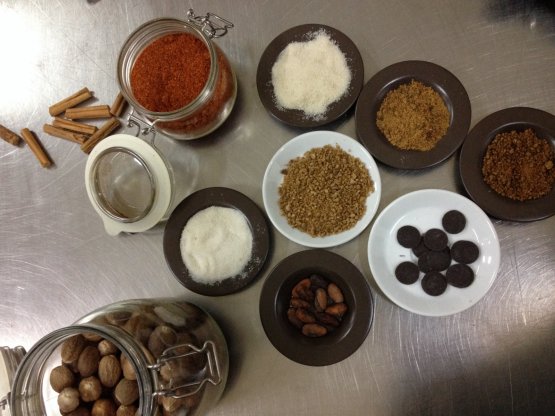This is one of the many stories in which cultures overlap, in Sicily. The foreigner, this time, is Simone Sabaini from Verona, 40: a decade ago he was working in finance, then he gave up and began to work for Altromercato, taking care of cocoa productions in Venezuela and Ecuador. In 2011 he arrived in Modica and created Sabadì, an establishment dedicated to “the day that does not exist”. His goal was producing a typical local chocolate, actually, no: because that delicacy is less and less craveable, with too much production and who cares if quality disappears.
Sabaini pulls the bull by its horns: in his opinion the problem is based on the very production system of Modica chocolate, «because of how it is produced, its aromas fade too rapidly». Therefore it is necessary to find alternative ways, inventing special machines, «applying technology to a traditional process» so that this can take place at a lower temperature. Modica chocolate, he explains, was conceived for a rapid consumption, not for a long preservation; the cocoa butter molecules are unstable, when processed at the usual temperature, and after two or three weeks from production the bonds are broken. The visual effect: the fat, white part emerges on the surface. The textural effect: cocoa separates itself from the sugar, the chocolate tends to crumble. The aromatic effect: the cocoa flavour disappears, the sugar one prevails. A disaster. Sabaini: «Here in Modica they say that these are peculiar characteristics of the chocolate. In my opinion, this is a big failure», which the production system he invented neutralises.

One of Simone Padoan’s pizzas with Sabadì chocolate: grated on a beef and spinach tartare, with Prime Uve spirit
“Modica” chocolate thus keeps its aromas intact. This is why it is used in the kitchens of many chefs.
Simone Padoan uses is it as the component of some of his pizzas (with
grilled celeriac, soused onions, chocolate “earth” and hazelnuts; the “Orto dolce” has Modica chocolate together with
fruit and candied vegetables, carrot and white chocolate mousse, Noto almonds sorbet…). The other pizza-chef
Renato Bosco uses it for a dessert (chocolate
semifreddo with pieces of bread made with mother yeast);
Davide Longoni makes a panettone,
Paolo Parisi seasons his meat ravioli with marjoram and red orange; at
Cru.dop in Roma they powder it on raw fish; even two creative chefs such as
Nicola Cavallaro and
Fabrizio Mantovani use it. And
Teo Musso pairs it with his beers.
Today it has the fame of a “gourmand chocolate”, you can buy it at Selfridges in London and a bit everywhere at Eataly. Not in Modica: here Sabaini didn’t want any point of sale, only a modest laboratory on the ground floor of a palace, packed with machines, three employees and a turnover that this year should reach 500K euros, 35% abroad. Needless to say, he uses the best cocoa of the Nacional fino de aroma Arriba SSS variety from Ecuador, bought from small producers united in a co-op.

Only high quality raw materials (photo credits Passera)
The sugar is highly selected, then there are eight different pairings:
Sarawak white pepper, sea salt from Trapani, cinnamon from Sri Lanka, Habanero chilli pepper, late mandarin from Ciaculli, Sanguinella siciliana red orange, Interdonato lemon… «We don’t use essential oils or aromas, only dehydrated fruit, pure agricultural raw materials».
George Clooney wanted his wedding guests to taste this
Sabadì chocolate.
What else?